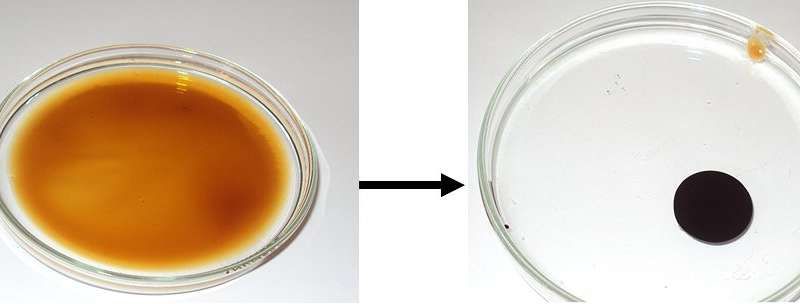An Effective Solution for Collecting Spilled Petroleum
Published on by Water Network Research, Official research team of The Water Network in Academic
Chemists from RUDN University have synthesized new surfactants and studied their characteristics. The compounds obtained can efficiently collect petroleum spilled on the surface of water .
The scientists have reported their findings in the Journal of Molecular Liquids.

During their research, the chemists have synthesized new ionic and nonionic surfactants. To do that, they first obtained nonionic surfactants, monoisopropylamines and diisopropylamines, and then turned them into ion forms using polymethacrylic acid.
The scientists have identified the physicochemical and colloid-chemical parameters of the compounds. An important property of the synthesized substances is their ability to localize thin (less than one millimeter) petroleum films on the surface of water—that is, to limit their distribution, forming thicker oil spillages with lesser area.
"It is known that the problem of the global ocean petroleum pollution is relevant because of the intensification of the rates of petroleum production and the ever-larger volumes of petroleum being transported along waterways. When spilled petroleum is collected mechanically, a thin film (< 1mm) remains on the surface, which can only be localized by physico-chemical methods, including the use of petroleum-collecting surfactants," says Ravan Rahimov from the Department of Organic Chemistry of the RUDN University.
Many petroleum-collecting surfactants are not easily dissolved in water. That impedes the diffusion speed and slows down the spillage localization. The researchers have managed to improve both diffusion and adsorption, the latter meaning concentration of substance on the boundary of the mediums, in this case water and petroleum.
In the course of the research, the scientists used such methods as nuclear magnetic resonance (NMR) spectroscopy and infrared spectroscopy, dynamic light scattering, conductometry (measuring of the solutions' electroconductivity), and viscometry (measuring of the fluid viscosity). They also used the tensiometric method (precision measurement of surface tension) to establish that compounds produced on the basis of one of the compounds studied, dodecylamine, exhibit the greatest surface activity.
Also, the efficiency of petroleum collection is influenced by the intensity of the formation of micelles—independently formed aggregates of molecules. Their formation is related to the structural features of the surfactant molecules (for example, the size of the nonpolar radical and the nature of the polar group).
The scientist describes the petroleum-collecting surfactant's action: "The petroleum-collecting reagent spontaneously spreads and creates surface pressure. This pressure influences the petroleum film on the water surface. When the pressure of the reagent spread is more than the pressure of the petroleum spread, the film thickens and shrinks under the surfactant's spread pressure."
In their work, the chemists cite the data on comparing the compounds they had obtained with other surfactants by their ability to collect petroleum. The compounds synthesized have shown high efficiency in each of the three environments in which the measurements were conducted: distilled, fresh and sea water; in particular, the best results were obtained using the sea water.
The research was conducted in collaboration with the scientists from the Institute of Petrochemical Processes of Azerbaijan National Academy of Sciences.
Released by RUDN University via Phys.org
Journal reference: Science Direct
Media
Taxonomy
- Water Pollution
- Decontamination
- Pollution
- Water Pollution Control
- Petrochemicals
- Petroleum
- Pollution
- Environment Protection and Pollution control